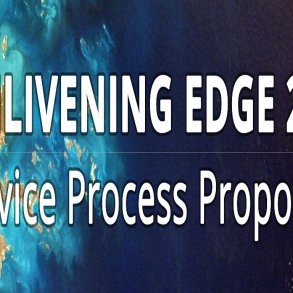It’s a few months into our self-organization journey and it’s safe to say we don’t have it all figured out. Not even close. And you know what? That’s ok!
Our offices have been buzzing about all things “Teal” lately. (Read more about what this means here). In addition to our San Francisco Labs team hosting a local self-organization meet up at its office, there was recently a “Teal Summit” where people gathered to focus on the progress we’ve made and talk about what going “Teal” means for Zappos. These thoughts ranged from “a group of people who are self-aware enough to see where they need to contribute” to “accountability and responsibility to the company and each other.”
As we share what’s worked and what hasn’t, we can appreciate where this journey’s taking us and all that we’ve learned so far. Here are some of our discoveries.
What’s working well:
We’re Developing New Leaders
In Holacracy, there is no traditional hierarchy but there is a hierarchy of work that is clearly tied to a purpose. Each “circle” (or team) has a “Lead Link”(learn more about this here). Many times, these are people who may not have previously held a managerial role within the company. With about 500 circles formed so far at Zappos, it’s estimated that 300 of those Lead Links are new leaders. Wow!
Employee development classes are being created to give people the tools they need to be successful in our new ecosystem.
In addition to classes, people are finding mentors to support these new roles. Lead Link Danielle Kelly says, “Without having someone there to guide me along and give me advice, I don’t know that I would be where I am today. “In both Teal and Holacracy, we don’t have managers, but as human beings we need the support and help from someone with experience. Once I was able to get my footing with one circle, it became a lot easier to protect and support my circles going forward.”
Innovation is being supported more than ever
Some say that corporate hierarchy hinders innovation. To get fresh initiatives off the ground in a command-and-control environment, you have to pass through a seemingly endless chain of command. Usually, by the time the idea is implemented, it’s no longer as innovative or may have evolved through numerous feedback loops, so it barely resembles the original idea. This may not always be the case, but is something that has happened at Zappos. In the sense and respond world of Holacracy, we encourage everyone in the company to bring up tensions (gaps between where we are and where we could be) freely. In meetings, there is a process that allows circles (teams) and ideas to be created, as long as it doesn’t cause the company harm or move us backward.
Ideas are flowing and people feel supported to make those ideas happen.
There’s even a circle within the company that was created as a placeholder to help experiments get off the ground. Some of the ideas coming from this circle range from improving employee business travel to wowing customers with a customized virtual fitting room experience.
In the past we’ve been able to stay on top of the social media trend by engaging customers on Twitter, something most companies weren’t doing at the time. With the cross-functional teams in a Holacratic environment, we’ve been able to bring ideas together from our Customer Loyalty and Social Media teams to continue to push the envelope and create new experiences. From the forming of our CLT (Customer Loyalty Team) Social circle, we’ve even pushed forward a service called Ask Zappos, where any user can send us a picture of an item they want and our team will find the exact match within 24 hours.
Motivation and Trust Are Going Hand In Hand
A question that often comes up is how do you keep people motivated without a “boss”? In short, the answer is trust.
With great responsibility comes great freedom. Paul Green from Morningstar, a company that practices self-management, says it best, “you can’t ask someone to take total responsibility, if you’re not gonna give them total freedom.” (You can view his full talk here: http://www.mixmashup.org/video/paul-green-mashup-talk) People should have freedom to make the decisions needed to do their work and to push the company forward. With that trust, people become accountable for their actions and to each other.
How do you get that trust established? For us at Zappos, it starts with the hiring process. Recruiting for culture fits helps us get the right people in the door. From here, we lay the foundation in our New Hire Training program, which every employee must complete. With the right training and tools in place, everyone is empowered and trusted to make decisions with our Core Values being there to guide them.
What we’re working on:
Compensation and Progression
With employees filling roles across multiple teams and departments , we have to devise a system to make sure people are being compensated for the work they are doing. We’re exploring a badging system where skills and work can be turned into badges with requirements that allow people to earn them and can even be tied to compensation. Some of the badges already created include a Holacracy embracer and mentorship badge.
Feedback and Accountability
In the absence of traditional managers, we are developing a peer-based feedback system to hold each other accountable. Our first step in this direction is a Conflict Resolution class to teach people how to talk through difficult situations and be open with one another.
In the end, there is no “Teal” checklist. It’s not an end state but an ongoing journey.
We don’t have all the answers but that’s not the point; in a Teal mindset, an organization is seen as a living entity with its own creative potential and evolutionary purpose. It’s up to us to listen to that purpose and evolve along with the company. As we continue to grow, we’ll learn from what works and, more importantly, what doesn’t.
“An organization’s ability to learn, and translate that learning into action rapidly, is the ultimate competitive advantage.” Jack Welch
We’ll keep you updated on our progress in our Teal journey in later blog posts!
Share your thoughts below! With what you know about self-organization so far, what things is your company currently doing that fits in with the “Teal” mindset?



